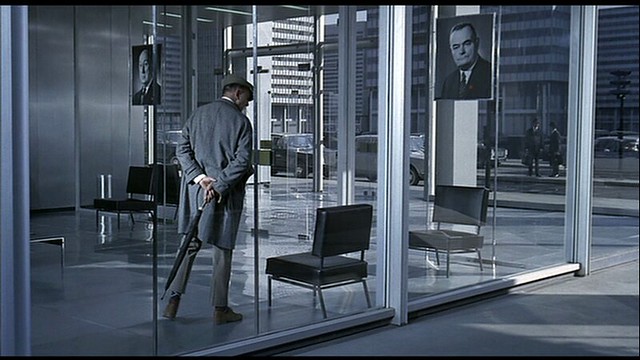Cinema Studies Essay: An Exerpt
The use of props in Playtime significantly contributes to the construction of the inhumane setting established by Tati, with the introduction of chairs in this shot illustrating Hulot’s confusion and difficulty in accepting and understanding modern Paris- later on becoming a motif throughout the film. A long shot is used to show the entirety of Hulot making his way through the waiting room, becoming perplexed by the identical chairs apparently not designed for human use. He inquisitively presses into one of the chairs and the material suctions inwards, creating a vacuum of negative space, accompanied by a humorous whooshing sound. It holds for a moment and then pops back out, appearing to act mechanically and of its own accord. His curiosity extends as he attempts to sit on the chair and the same phenomenon occurs. Baffled by the impracticality of the furniture that is supposed to be designed to provide human comfort, he shrugs and walks away. While this is happening inside, the traffic outside seem to be in sync with the movement of the chairs- further establishing the sense of objects acting in a mechanical manner. These chairs are stylish and uniform to the aesthetic of the landscape, but to the price of practicality- symbolising the obsession with perfection evident in Tati’s Paris. The inclusion of this sequence of actions and the motif of chairs in the shot provides a physical, concrete example of the inconvenience to human activity created by modernity.
